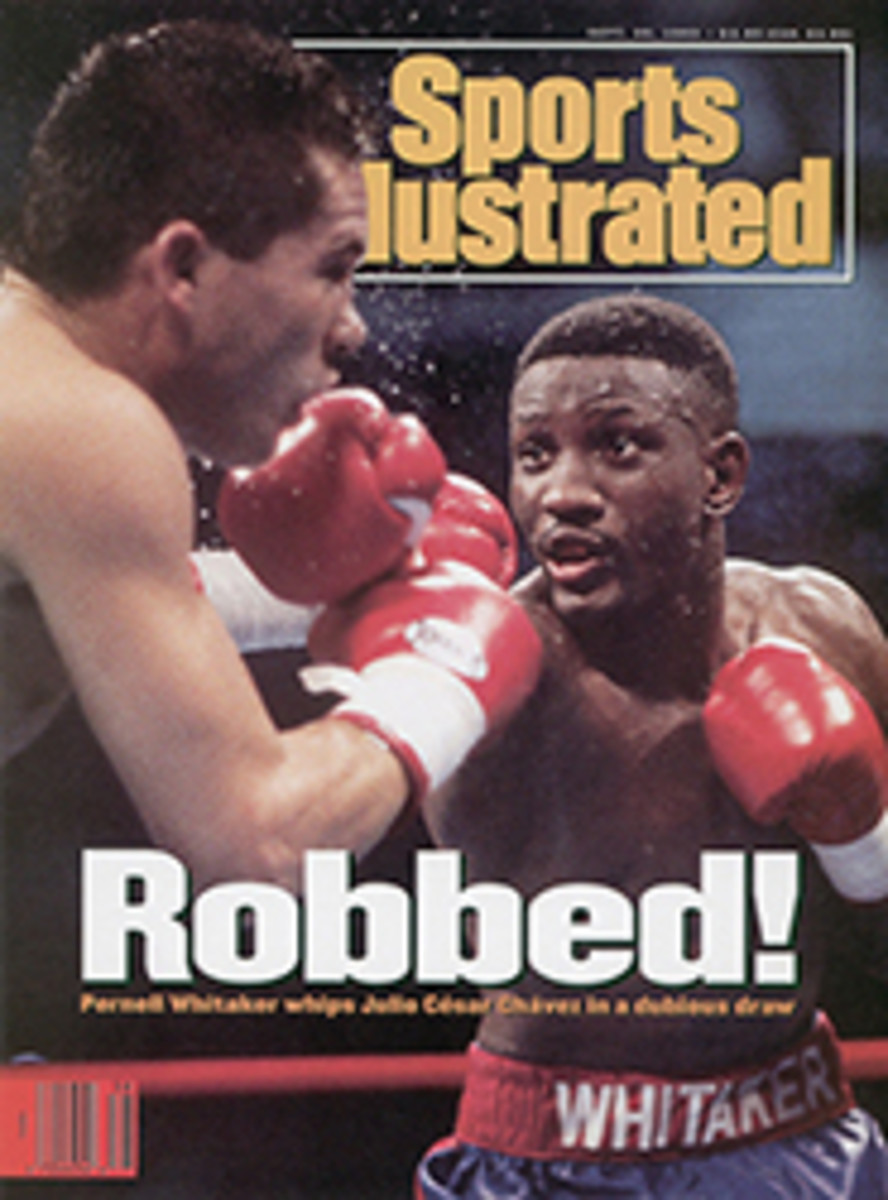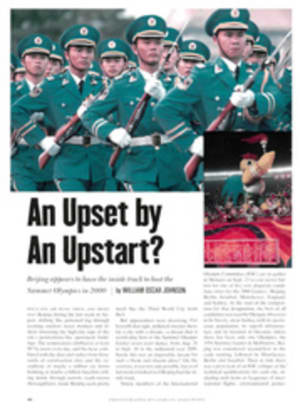
Doing the Groundwork
A cloud of dust hangs over Great Meadows, N.J., as if it had been kicked up by some ghostly wagon train that forever circles this small rural valley. But the ever-present drizzle of gray grit that blankets the eight-square-mile township is no mirage, nor does it signal the return of a Depression-era dust bowl. In fact, that stuff flying around Great Meadows is a sign of good times, because business is booming down on the dirt farm.
The prime New Jersey soil that fills six unfilled acres just beyond Jim Kelsey's dirt driveway is almost worth its weight in gold. This small piece of land in the northwest corner of the Garden State is home to the Partac Peat Corp., one of the largest sports-surface businesses in the U.S. Kelsey, its 46-year-old owner, has literally been living off the land for some 20 years.
Partac Peat, which advertises itself as the "one-stop source for America's finest sports surfaces," provides groundskeepers with more than 500 products for the care of sports fields—from water-removal machines to green grass colorants to its latest product, permanent latex foul lines. But Kelsey's main product is the stuff that fields of dreams are made of: dirt.
Every year Kelsey and his 10 crewmen process some 30,000 tons of dirt from six of his nearly 1,000 acres; then they grind, sift, shred and blend it and ship it to baseball parks from Maine to Hawaii. Although Kelsey also sells soil for use on golf greens, clay tennis courts, boccie courts and racetracks, half of his company's annual gross income comes from baseball. His client list includes a dozen major league teams, 60 minor league teams and more than 300 college teams. "I figure I'm doing my part to contribute to the game," he says.
The reason Kelsey's dirt is in such demand—and at $5.35 per 50-pound bag of diamond mix, it's also dirt cheap—is that it's well aged. Like the best wine, the best dirt is old dirt. Eighty thousand years ago Great Meadows was buried under glacial ice almost two miles thick. After a giant meltdown roughly 10,000 to 12,000 years ago, rocks that had been ground down and dragged along by the glacial flow left a 400-foot-thick layer of top-quality clay in Great Meadows. "The glaciers stopped right here and dumped all kinds of minerals on the property," Kelsey says. "We just got lucky."
Since the 1920s the primary business of the farms in the area has been the harvesting, packaging and selling of the peat that sits atop the clay. In the early 1940s, when Kelsey's father, also named Jim, bought the little farm, much of his peat was used to landscape the grounds around many of the new buildings—including the United Nations—being constructed all over New York City. But the elder Kelsey, a Hollywood screenwriter turned commodities broker before going into peat farming, had his own entrepreneurial vision: to grow asparagus and brussels sprouts, freeze his crops and then package the frozen produce. In 1954, however, with his plans still in development, Kelsey died of a heart attack, leaving his wife, Maria, and his seven-year-old son with a modest peat business as their only means of support.
Eleven years later, when the younger Kelsey left for Claremont (Calif.) Men's College, Maria was still working the land. (In 1964 she had provided most of the peat for the New York World's Fair.) Her son, however, had left the farm far behind. Kelsey, who majored in international relations, envisioned a career in journalism, perhaps as a foreign correspondent. He wrote his undergraduate thesis on the life of Eduardo Mondlane, the guerrilla leader in Mozambique's war for independence from Portugal. Kelsey's plan to turn his thesis into a full biography was derailed when, three months before he graduated, Mondlane was assassinated.
Reluctantly, he returned home from Claremont, then took over the farm, which was going through hard times. Things got worse three years later when, in the fall of 1972, an electrical fire burned down the peat plant. The Kelseys, underinsured, lost everything connected with their business except some field equipment. Without a peat-processing plant and with very little equipment, they decided to try the sod business, although, with only one small lawn mower, they spent more time cutting the grass on top of the six acres of sod than in cultivating the stuff it was rooted in.
A short time later Kelsey's life—and lawn—changed dramatically when he attended the New Jersey Turf Grass trade show at Montclair Country Club. The golf-course superintendent suggested that Kelsey expand into the top-dressing business. Kelsey replied, "What's top dressing?" In two years he was digging up the backyard and, using his own carefully crafted top-dressing recipe, sifting, grinding and blending soils into the fine, sandy mixture that is used to keep golf greens soft and springy. There was one hitch. "We had such sparse equipment," says Kelsey, "we could make only one truck-load [of top dressing] in a day. At that rate it wasn't exactly a lucrative business."
Business began to boom in 1984 when Kelsey was approached by Ted Lake, the superintendent of public works from the Recreation and Parks Department of nearby Hackettstown, N.J. It seemed the town's dirt supplier, Art Kuntz, was about to retire and Hackettstown needed someone to resurface the municipal playing fields. So Kelsey bought Kuntz's sports-dirt business, and by three years later the company's professional baseball clientele had increased from six teams to 30.
Kelsey spreads the good word about dirt through advertising and direct mailing. When he really needs to nail down a sale, he tucks a two-by three-foot scale model of a playing field under his arm and hits the road. In 1986, while visiting the Los Angeles Dodgers' spring training camp in Vero Beach, Fla., he accidently dropped his model in the parking lot outside the stadium. Bill Moolenaar, then the Dodger groundskeeper, noticed that the pitcher's mound in the model didn't break apart when it landed on the concrete. Duly impressed with the clay's cohesiveness, he exclaimed, "I'll take it!"
Kelsey is mum when it comes to the secret of his soil mixes, though he can wax poetic about the nuances involved in turning a simple playing surface into a true playing field. For example, the pitcher's mound, which requires about five tons of dirt, is built of a pulverized, compact mix firm enough for good footing but also with a little give to save a pitcher's knees. Mound dirt comes in four colors, red, orange, brown, and gray, which are blended according to the particular tastes of each client. The dirt used for the diamond (about 132 tons are needed) is a bit less firm—for purposes of sliding—than that of the mound, but it is compact enough not to separate and blow away. The home plate area (1½ tons) is a medium-hard mix, just right for digging in, while the warning track (which needs anywhere from 40 to 88 tons) has a "crunchy" feel to warn outfielders that the wall is near.
According to Kelsey, caring for a playing field is an art form. And to reward particularly gifted groundskeepers, Kelsey, along with the Sports Turf Manager's Association and, since 1986, Sports Turf magazine, has sponsored an annual Baseball Diamond of the Year Award. This year's winners, voted on by a panel of four major league head groundskeepers, included West Palm Beach Municipal Stadium, in the professional category; the University of Mississippi's Swayze Field, in the collegiate division; and Twi-Light Field in Danvers, Mass., in the school-municipal-park division.
A few years ago Kelsey tried to bring some of his award-winning dirt to the Far East when Japan's baseball commissioner, Ichiro Yoshikuni, asked him to resurface all of Japan's major league parks with his special Garden State soils. Unfortunately, Japanese customs officials were evidently unimpressed by the American dirt; they deemed it to be an illegal agricultural product and sent it back to the States. These days Jim Kelsey's problems are really rather, well, down-to-earth. "All those piles of sand," he says, surveying his dusty domain, "I haven't been able to wear contact lenses in years."
PHOTO
MANNY MILLAN
Kelsey will mix and match his multicolored soil to a customer's specifications.
PHOTO
MANNY MILLAN
Each year Kelsey digs and sells 30,000 tons of dirt from his farm.

